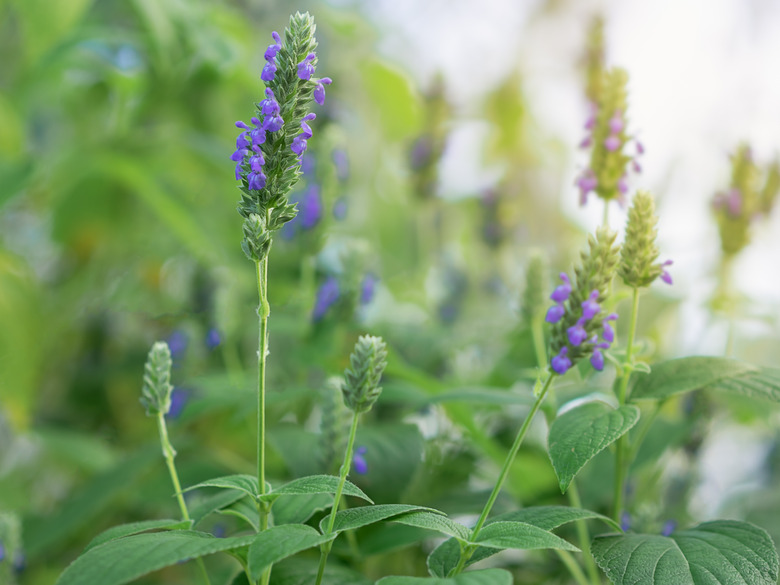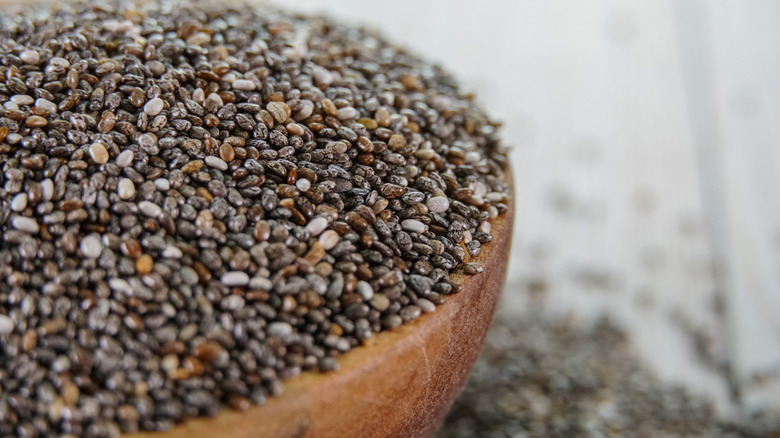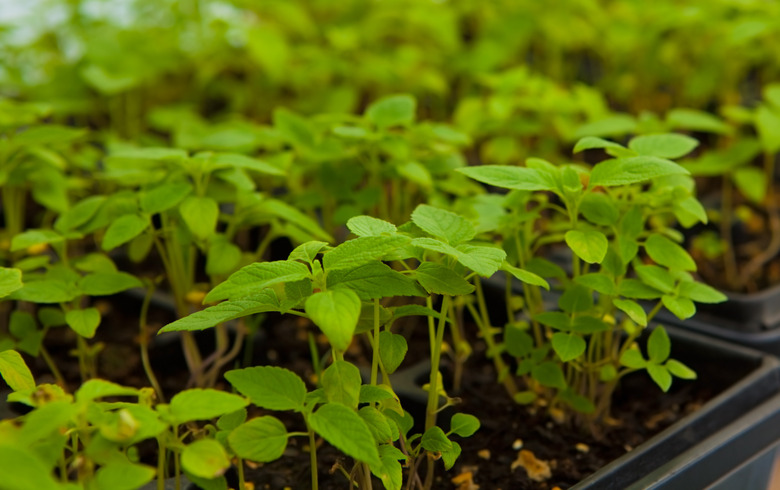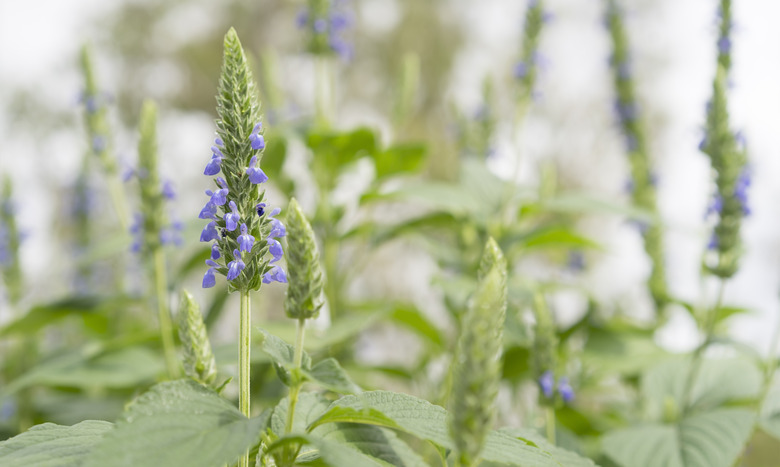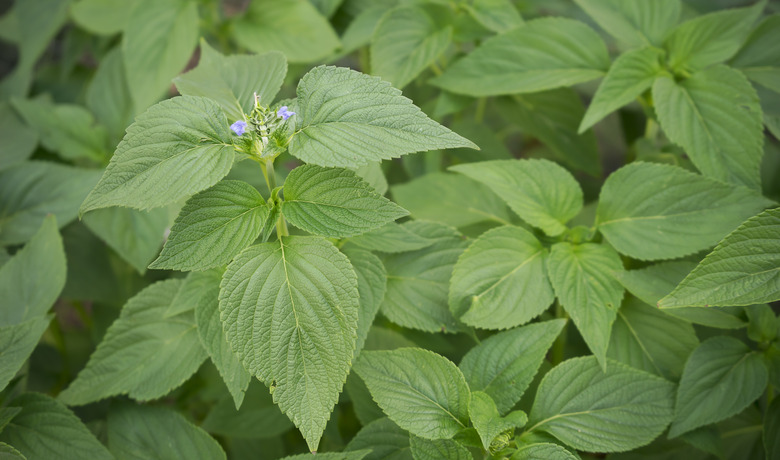How To Plant & Harvest Chia Seeds
Chia plants seldom appear for sale in plant nurseries, so harvesting and growing chia seeds may be your only option if you want to grow this showy, edible plant at home. Sometimes called chia sage, chia plant (Salvia hispanica) is a tall, flowering perennial that grows best within USDA plant hardiness zones 9a to 11.
The dainty, bluish-purple flowers bloom in summer and **later ripen into small seed pods that line the 2- to 3-foot-tall stalks.** Harvesting chia seeds takes little effort and the seeds are easy to start in pots or directly in the garden, although the germination time is variable and can take anywhere from a couple of weeks to several months.
Harvesting Seeds From a Chia Plant
Chia seeds are ready for harvest in late autumn when the small, elongated seed pods dry out and turn brown. The easiest way to harvest the seeds is to cut off the tall stalks at the base when the seed pods are mostly dry.
Dry the stalks for a few days in an airy location out of direct sunlight, such as under a porch or indoors near a slightly open window. Set the stalks on a shallow tray or on a tabletop lined with newspaper.
After a few days, crush the seed pods by hand to release the tiny, brownish-gray seeds. Sift through the seeds and pick out any that appear damaged. Store the seeds in a container inside the refrigerator or another cool, dark and dry place until you are ready to sow them.
Tip
Store chia seeds in a sealed container such as a small plastic food storage container or amber-colored jar.
Starting Chia Seeds
Start chia seeds indoors or outdoors directly in the garden. In frost-free climates, start the seeds directly outdoors either in autumn or early spring; in colder climates, start them indoors before the last frost.
Starting Chia Seeds Indoors
Chia seeds need plenty of time to grow before being transplanted into the garden, so it is best to start them 8 to 10 weeks before the last spring frost.
1. Fill a nursery flat or some small pots with moist potting soil. 2. Scatter a small pinch of seeds on the soil surface and cover them with a thin sprinkling of coarse sand. 3. Set the flat or pots near a bright, sunny window. Chia seeds need temperatures between **60 and 70°F,** so use a propagation mat to warm the soil if temperatures are cool. 4. Mist the soil whenever it feels mostly dry, but do not saturate the soil. 5. Watch for seedlings in two to six weeks, although some seeds may take much longer to germinate.
Transplant chia seeds into larger containers such as 3-inch pots and place them in a bright, warm and sheltered location for a few weeks before transplanting them into the garden or into a permanent pot with plenty of drainage at the bottom.
Tip
Chia plants can reach a mature height of nearly 4 feet, so they need a large pot, preferably 3 gallons or larger.
Starting Chia Seeds Outdoors
Chia plants prefers full sun but will tolerate light shade in very hot climates. Fast-draining soil is ideal but very poor, sandy soil should be amended with a 1-inch-thick layer of compost worked into the top few inches. Prepare the bed a week or so before sowing the seeds.
- Scatter the chia seeds across the surface of the bed and cover them with a thin layer of soil. Don't worry if the seeds are unevenly distributed across the soil, because you will thin them out later.
- Water the bed with a misting nozzle whenever the soil feels nearly dry on the surface. The seedlings will emerge in a few weeks or longer.
- Thin the seedlings to one every 12 to 18 inches after they reach 2 inches in height and have a set of mature leaves.
Tip
Use small scissors to snip off unwanted seedlings at soil level rather than pulling them up, which might disturb nearby seedlings.
Growing Chia Plants
Chia plants do not require much hands-on care, although they will bloom more abundantly with a little extra attention.
**Pinching:** Pinch back young chia seed plants to encourage branching, bushy growth. Simply pinch off the tips of the main stems just above a pair of leaves when the plant reaches 6 to 8 inches in height.
**Watering:** Water regularly whenever the soil feels dry. Seedlings and chia plants grown in pots need more frequent watering and should not be dried out to the point of wilting.
**Feeding:** Chia seed plants are moderate feeders that benefit from regular applications of diluted fertilizer. Use 1/4 teaspoon of 15-15-15 or 7-9-5 fertilizer in 1 gallon of water. Stop feeding in late summer so that no new growth is produced before the weather cools down.
Tip
Chia plants are not especially susceptible to disease, but it is still a good idea to wipe down your pruning shears with household disinfectant before pruning.
**Pruning:** Chia seed plants have a tendency to self-sow. If you don't want chia seedlings taking over your garden, consider pruning off the flowering stalks before they set seed.
